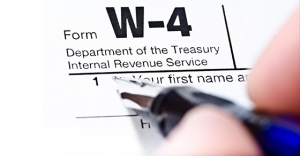
Improving a struggling employee’s performance is a two-way street
It’s easy to get frustrated when an employee is failing to produce the volume or quality of work you’re looking for. A business owner or department manager may even give in to the temptation to play the blame game, pointing a finger at the struggling worker and only exacerbating the situation.
In truth, performance improvement must be a two-way street. There’s no doubt that the individual in question must step up and do better. But, as an employer, you’ve got to provide information, tools and support to help his or her improvement efforts.
Map the route
To get started, before saying one word to the person, fully investigate the issue. This means first defining the nature and degree of the underperformance and then determining whether you’ve done the best job possible in helping the employee to be successful.
For example, when and how well was the employee trained? Someone hired years ago may have been taught to do a job differently than it now needs to be done. Also, is the employee aware that you consider his or her work subpar? Has anyone discussed the problem with the employee or put it in writing?
Staff members who aren’t sure whether they’re on the right track often wait for feedback, rather than proactively seeking guidance. That means you may need to act at the first sign an employee isn’t meeting expectations, rather than hoping the situation will remedy itself.
Embark on the journey
Once you’ve established what’s wrong, meet with the employee. Clearly and specifically state your performance concerns and let him or her know that your objective is to work together to find a solution.
After naming the specific performance issues, ask how you can help the employee turn around the situation, including some predetermined suggestions. There may be issues you aren’t aware of, such as tools that are in disrepair or missing, or poor lighting in the employee’s workspace. So be open to his or her input.
If the employee attributes the subpar performance to lack of clarity about expectations, the remedy might be as simple as weekly meetings with his or her manager to go over what needs to be accomplished. If the employee reports feeling overwhelmed and unable to prioritize tasks, you may need to provide additional training on organizational skills or better use of technology.
Work with the employee to create a performance improvement plan that includes specific goals and a timeline for achieving them. Then follow up regularly. If the goals and timeline are met, you’ll enjoy the benefits of having a more productive team member. If they aren’t met, then you need to consider what further action to take.
Take the trip
Employee retention isn’t about only strong compensation packages and companywide recognition. It’s also about making the effort to help struggling employees find success. When the person in question is, underneath it all, a good worker, it’s a trip well worth taking. Our firm can provide further information and ideas.





